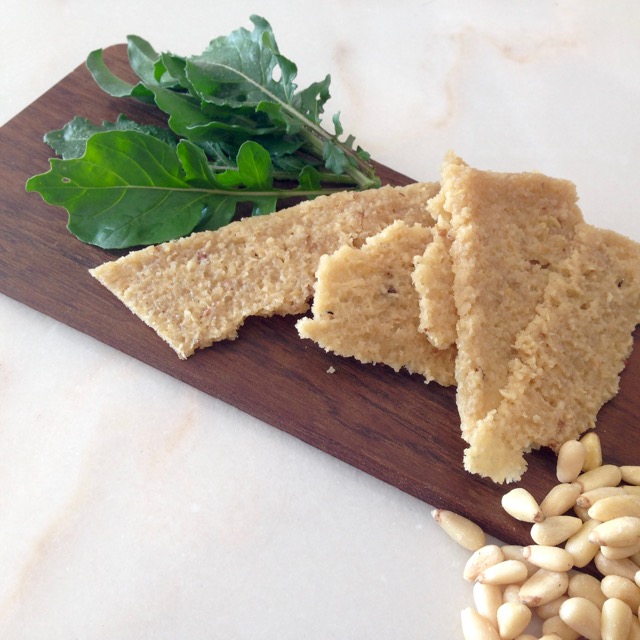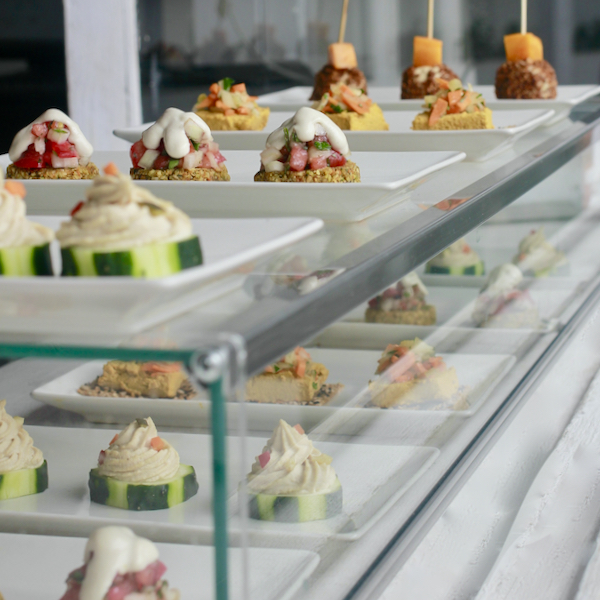
Vegetal Cheese? Hmmmm…Would you forsake your regular dairy cheese in favor of a cheese made with nuts? The quotidian cooks have been arguing around this question for months now. As flexitarians, our first reaction was: Nooooo! A local dairy-based artisanal cheese is hard to beat. If it is organic and small batch produced then there’s little to discuss. Weeks later we came back: If by fermenting nuts we positively alter their proteins and also add a good amount of probiotics… then we are talking about a really interesting food. Will it truly qualify as a very good cheese? Crafting nut cheeses at home is a small adventure and, finally we couldn’t resist the temptation. For us, vegan cheesemaking is the ultimate frontier in vegetarian foods.
Today we encourage you to explore the fascinating world of vegan cheesemaking with a beautiful recipe: a Parmesan style cheese made with pine nuts. It is a technical recipe of some complexity but fairly doable and which offers highly satisfying results. With these techniques we advance another step into the world of Raw and Living Foods.
Vegan cheesemaking requires using two standard techniques in Raw cooking: nut fermentation and dehydration. You will need to be very careful with the selection of ingredients and hygiene of instruments during the process. You will also need to take extra care in monitoring time and temperature during fermentation and in handling correctly the dehydration. We have prepared a set of pictures showing the key steps together with the recipe and the culinary tips that will guide you through the process.
Obviously, we call our cheese Parmesan due to its culinary propierties. The original Parmigiano- Reggiano is irreplaceable. This vegan cheese has a flaky and oily texture. Its flavor profile is smooth, with pungency and a beautiful aroma of pine nuts. Its flavor will round up in one or two days. Enjoy it while it lasts… There is something in it that makes it disappear!

Here’s a picture summary of the main steps in the process: mixture preparation and texture, fermentation and dehydration. In the recipe’s instructions you can read the details of each step and in the culinary tips section, the things you need to monitor carefully.




- 1 + ¼ cups pine nuts, soaked 1 hour in filtered water, drained
- 1 teaspoon unpasteurized white (Shiro) miso
- 2 teaspoons lemon juice
- 2 teaspoons nutritional yeast
- 1 teaspoon onion powder
- Sea salt, to taste
- Soak pine nuts for one hour in mineral or filtered water. Rinse well and drain.
- In a food processor, place pine nuts and miso. Add filtered water to cover pine nuts by 1-inch.
- Blend in pulses until pine nuts are pulverized but not blended smooth.
- Wash a pint-sized or quart-sized glass jar thoroughly with hot water. Pour the mixture into the glass jar and cover the mouth of the jar with screen or cheesecloth, securing it with a rubber band.
- Place the jar in a warm place, between 85-95 °F, undisturbed for 6-12 hours.
- Use a large spoon to scoop some cheese into a nut milk bag or a strainer lined with a double layer of cheesecloth. Squeeze and wring the cheese firmly over a bowl to collect the 'whey". The texture of the pressed cheese should be crumbly and fairly dry.
- Mix together pine nut cheese, lemon juice, nutritiona] yeast, and onion powder. Season to taste with salt. It should be relatively salty as traditional parmesan is.
- If the cheese is very dry or textured and chunky, add some whey and process in pulses in a food processor until you obtain a creamy but granulated paste.
- Spread mixture on a non-stick dehydrator sheet. Dehydrate at 112°F for 12 hours or until firm enough to transfer to a mesh dehydrator sheet. Continue dehydrating until completely dry.
Texture is very important for successful pressing to separate the cheese (solids) from the whey (liquid) after the mixture is fermented. The ideal finished texture is quite like cottage cheese (see picture).
Make sure temperature during fermentation stays stable between 85-95 °F . Do not let the mixture ferment more than 12 hours or it may develop strong flavors.
Use a splash of whey to round up the mixture when preparing it for dehydration. You are looking for a creamy spreadable mixture. Avoid a too dry or too wet mixture.
Be very careful not to use iodized salt. Iodine will alter the fermentation process.
Store in a sealed container or jar in a cool dry place for up to 2 weeks.











Leave a Reply